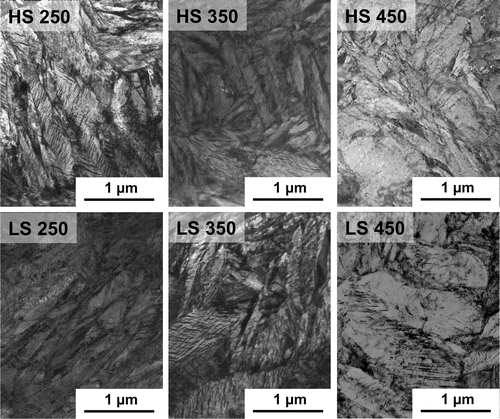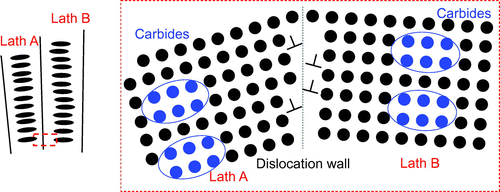Figures & data
Figure 1. Representation of the dislocation forest hardening contribution () to the yield strength of tempered martensitic steels. The dots on the graph represent the measured dislocation density (x-coordinate) and yield strength (y-coordinate) values of the material, where HS and LS represent high-silicon and low-silicon alloys, respectively, tempered at 250, 350 and 450
C.




